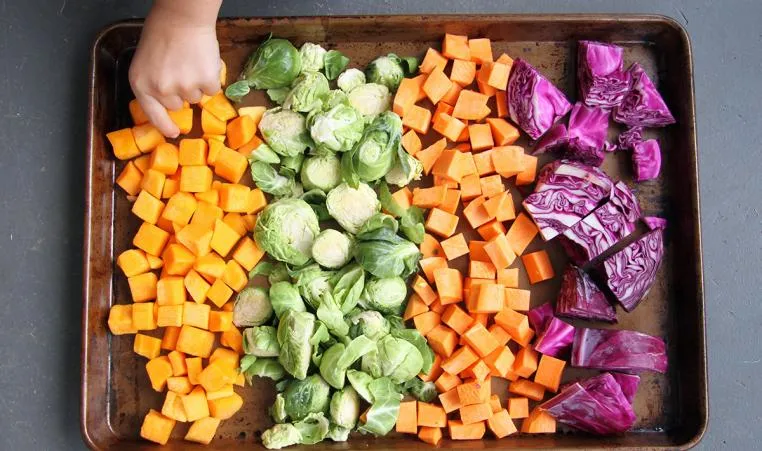
Add Some Delicious Pops Of Color To Your Plate
“Dear Sensibly Sprouted,
I love eating seasonally, but I was wondering if there are some vegetables that are healthier than others? What should I include on my plate this Fall?”
Great question!
When it comes to seasonal produce, one isn’t healthier than the next. Every vegetable has its own nutrient profile, including a unique blend of vitamins, minerals and antioxidants. But we do have some personal favorites to enjoy this season:
Sweet Potatoes
Higher in antioxidants than common white potatoes, sweet potatoes are part of the morning glory family, not the potato family. Ounce to ounce, the skin of a sweet potato is more nutritious than its flesh, so purchase the sweet potatoes with the darkest skin. Purple sweet potatoes are rich in anthocyanins a rich antioxidant. They can be stored for a week at room temperature, but they’ll last longer if stored in an open bag in a cool dark place with good air circulation.
Brussels Sprouts
Look for bright green, tight heads and refrigerate them as soon as you get home. To keep them fresh for more than a day, store them in a micro perforated bag. Steam them for 6-8 minutes to preserve most of the nutrients and antioxidants. Due to the two bitter chemicals (sinigrin and progoitrin) that give them their pungent flavor, the longer they cook, the more bitter they get.
Pumpkin/Squash
This group is rich in Vitamin A, magnesium, Vitamin E, Vitamin C, Potassium and fiber. Pumpkin seeds are rich in magnesium which is important for muscle and nerve function. Also, when it comes to squash, some varieties have more starch than others. Winter squash, such as acorn and butternut, are richer in carbohydrates than their summer cousins, such as spaghetti and zucchini squash.
Beets
Eating beets helps to relax and widen blood vessels, increasing blood flow throughout the body. Beets are rich in fiber, folate and potassium and get their red hue from a type of phytonutrient called betalains. They contain nutrients that enhance athletic performance, and natural sodium nitrates which reduce blood pressure and increase blood flow to the muscles. Beet leaves are more nutritious than the roots. Roasting, steaming and microwaving beets can enhance their antioxidant properties, reducing the oxygen required by muscles during exercise.
Carrots
Did you know that the first carrots to be grown weren’t actually orange carrots, but purple? In the 1300s, purple carrots began to cultivate in Spain, France, Germany and Holland along with white, red, and yellow carrots. Orange carrots didn’t exist until 400 years ago when a couple of breeders in the Netherlands crossed a yellow carrot with a red one: known as a “long orange Dutch carrot”.
Purple carrots contain anthocyanins which contain more antioxidants and have more health benefits than orange carrots.
Carrots are low in calories, high in fiber and are an excellent source of beta-carotene (the pigment in fruits/veggies that gives them that orange hue and converts to Vitamin A in the body). Many of the calories come from sugar, but there’s not enough sugar in a serving (½ cup cooked, 1 cup raw) to impact your blood glucose levels. Although rich in nutrients, the skin of a carrot is often thrown away. Think about plants’ first line of defense against UV rays, insects, grazing animals and mold. The more phytonutrients in the outermost layer, the better they’re able to protect themselves. When you throw away the skin, you lose one-third of its phytonutrients.
